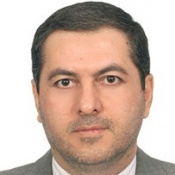آنالیز نقش سیاست پولی نامتعارف با استفاده از شاخص شرایط مالی: رهیافت خودرگرسیون برداری بیزی(مقاله علمی وزارت علوم)
منبع:
فصلنامه اقتصاد و الگوسازی، دوره 10، شماره 1 (پیاپی 37 )، بهار 1398، صص 211-240.
بانک های مرکزی به طور معمول با استفاده از ابزار سیاست پولی نسبت به نوسانات تورم و شکاف تولید واکنش نشان می دهند. با وقوع بحران مالی جهانی در سال 2007، سیاست پولی بانک های مرکزی و اثرگذاری این سیاست ها و ابزار قیمتی مورد استفاده، در جهت برقراری تعادل پایدار از کارایی لازم برخوردار نبود. در این شرایط استفاده از ابزارهای سیاست پولی نامتعارف در دستور کار بانک های مرکزی قرار گرفت. استفاده از شاخص شرایط مالی، وضعیت فضای مالی موثر بر بنگاه ها و خانوارها، جهت اتخاذ تصمیمات اقتصادی را نشان می دهد. این مقاله با هدف شناسایی و آنالیز ساز و کار انتقال سیاست پولی، تأثیر شاخص شرایط مالی بر فعالیت های اقتصادی ایران با استفاده از داده های فصلی سال های 1396-1385 برآورد شده است. سپس با استفاده از توزیع پیشن و پسین در الگوی خودرگرسیو برداری بیزی متغیرهای کنش و واکنش آنی برای شاخص شرایط مالی در بازه مورد بررسی برآورد شده است. یافته های پژوهش حاکی از آن است که شاخص شرایط مالی، بر تولید ناخالص داخلی و سرمایه گذاری بخش خصوصی تأثیر منفی داشته و رشد اعتبارات نقش مهمی در شاخص شرایط مالی داشته است.
